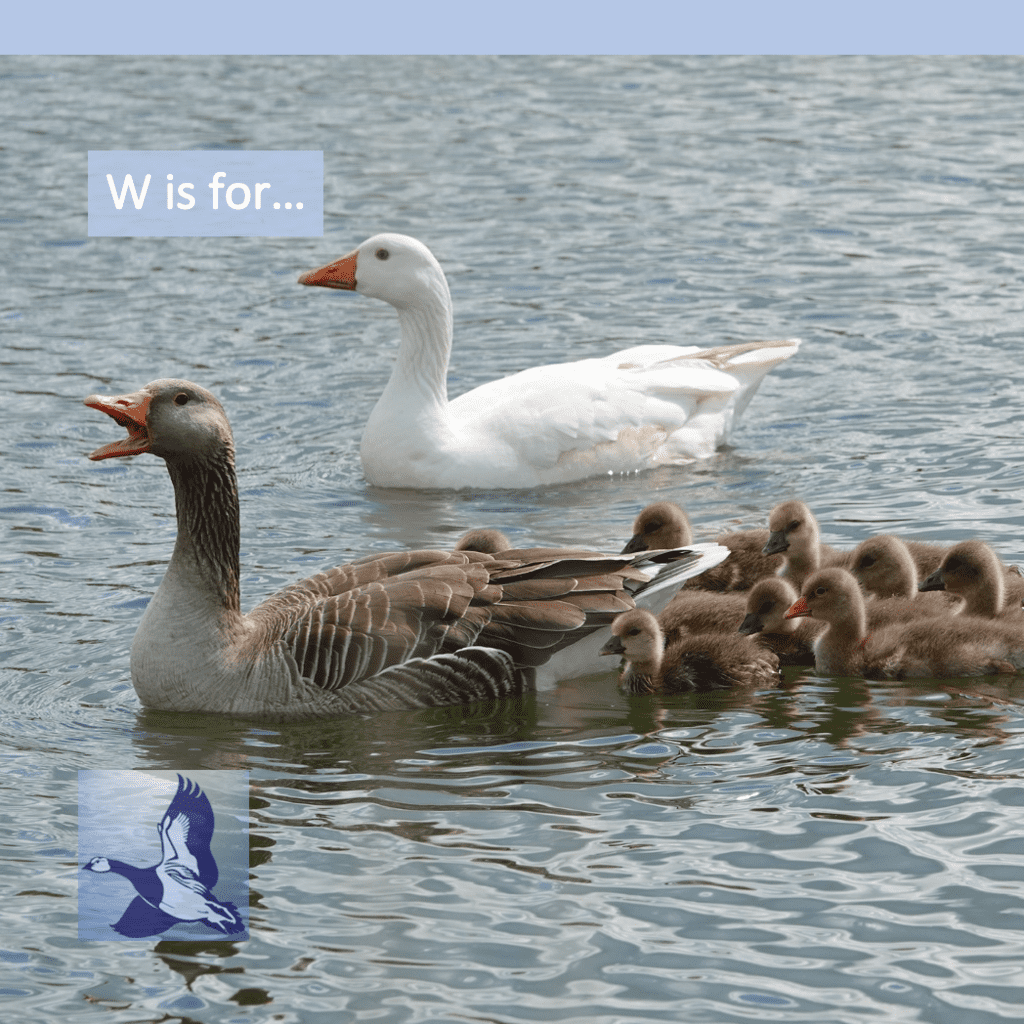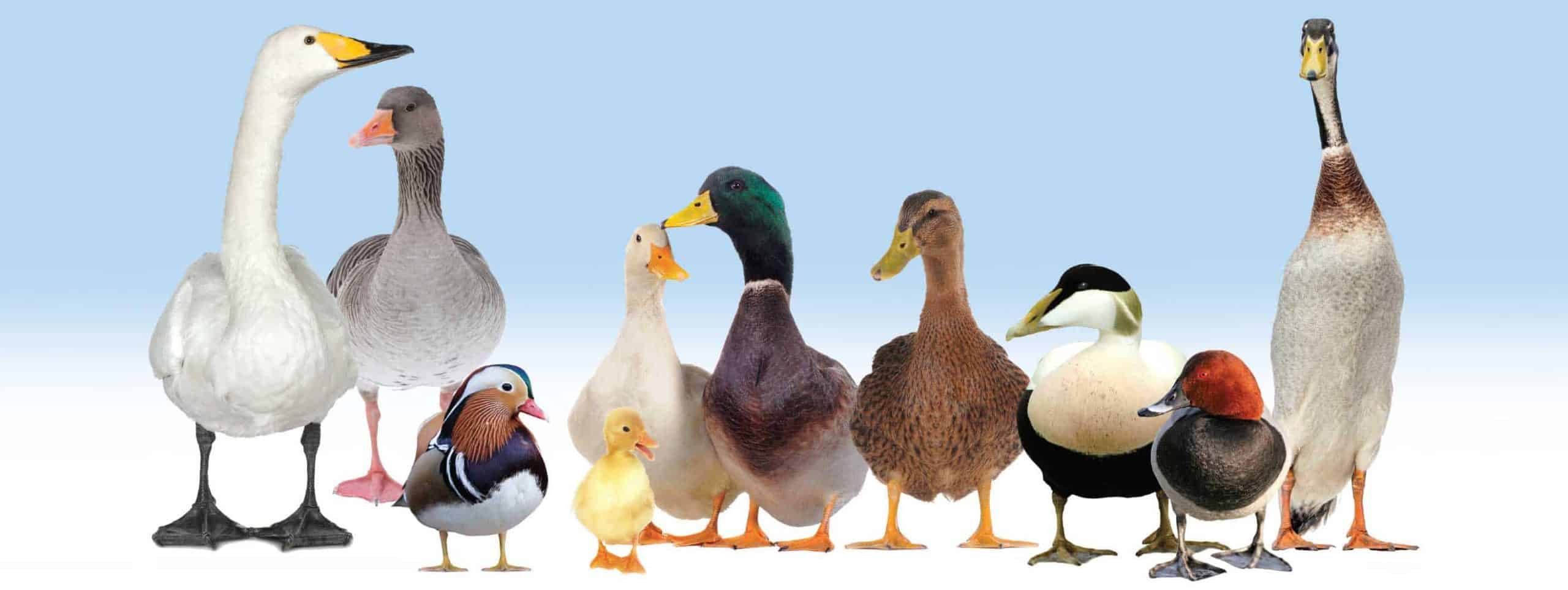W is for wild, introduced or domestic?
When we talk about wild waterfowl in Britain, we usually mean the birds ‘ordinarily resident’ here, in their wild colour and form. Some, like the Mandarin Duck (Aix galericulata) or Egyptian Geese (Alopochen aegyptiaca) have been released and have naturalised, but they don’t really belong here. Introduced species take a place in our natural ecosystem at the expense of our native ones.
Our domestic ducks originating here in the UK have been bred over hundreds of years from sports and strains of the Mallard (Anas platyrhynchos). Our domestic geese are descended from the Greylag (Anser anser). The Muscovy Duck (Cairina moschata) and the Swan Goose (Anser cygnoides) are the ancestors of the other breeds, most originating elsewhere.
Some domestic breeds such as heavy ducks, Indian Runners and Sebastopol Geese are less likely to adapt to life in the wild as they cannot fly to escape predation. The breeds that are most likely to breed with our native wild species tend to be the ones that have retained the ability to fly.
Why does it matter? Sadly when birds are dumped on our lakes and waterways they will of course interbreed with wild birds, like the Greylag hybrids pictured in this post. If you see a Mallard-shaped duck with a white bib or unusual colours, domestic interbreeding is usually to blame.
Read more about responsible waterfowl keeping on our waterfowl pages



